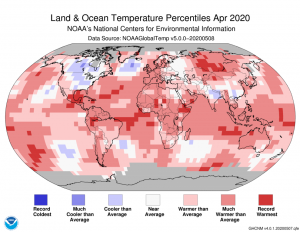- Get ready for a healthy dose of technological advancements this month with a list below that contains some real gems!
Low-cost nickel-iron catalyst could bring commercial hydrogen gas production one step close.
Low-cost catalyst improves efficiency of biofuel electrolysis including wood.
Heinz Frei’s synthetic leaf makes significant advancement towards efficiently generating renewable fuels.
Stable perovskite-silicon double-layered solar cell achieves 26.7% efficiency.
Optical fibers coated with a catalyst can produce hydrogen gas from water and sunlight.
New solar cell records set for a tandem setup – as well as for a six-cell junction variety.
New organic aerogel speeds up desalination and steam generation by absorbing 99% of the Sun’s energy.
Like solar cells this new technology harvests energy by collecting it from metal bonds in compounds.
Low-cost perovskite catalyst improves the conversion of water into hydrogen gas.
New hydrogel could cool batteries plus generate small amounts of electricity.
Low-cost, more environmentally-friendly lithium-sulfur batteries move closer to commercial production.
Significant advance in perovskite solar cell technology moves them closer to replacing silicon cells.
 The April 2020 NOAA temperature departure map shows pockets of record warmth on all continents with a marked region of cooler weather over central and northern North America.
The April 2020 NOAA temperature departure map shows pockets of record warmth on all continents with a marked region of cooler weather over central and northern North America.- The April 2020 NOAA Global Climate report is out and it appears that the climate continues to get warmer even as the world struggles with the COVID pandemic. In fact, the April 2020 average temperature was 1.91°F (1.06°C) above the 20th Century average and was the second warmest April on record in 141 years – behind only April 2016. Oh and fun, April 2020 was also the 11th warmest month in the past 141 years – all this on the backdrop of a Trump administration which has used the past few months to destroy the environment, such as seizing public lands to drill, mine and timber on, instead of preparing our nation to fight the global pandemic, sad…
- June 3rd is national Egg Day and in honor of this egg-citing holiday, my Google Search of the month was, “Eggs and GIS.” And yep, as you might expect we got a hit but it is not the eggs you might find on your breakfast plate, rather it is a study that incorporates GIS modeling and field studies to look at reproductive rates in Asian carp. Specifically the Iowa State University thesis by Carlos Antonio Camacho incorporates egg drift and density as well as reproductive assessment of Asian carp in tributaries of the upper Mississippi River in Iowa.
- Last month we explored the online GIS resources of South Carolina’s second largest city, Charleston, and for June we head to the Rocky Mountain region with a review of Rapid City, South Dakota’s GIS resources.
Rapid City, SD GIS Website
Rapid City, SD GIS Contacts
Rapid City, SD GIS Web Map
Rapid City, SD GIS Map Collections
Rapid City, SD GIS Direct Downloads (no free downloads though)
Brock Adam McCarty
Map Wizard
(720) 470-7988
brock@apollomapping.com
Low-cost nickel-iron catalyst could bring commercial hydrogen gas production one step close.
Low-cost catalyst improves efficiency of biofuel electrolysis including wood.
Heinz Frei’s synthetic leaf makes significant advancement towards efficiently generating renewable fuels.
Stable perovskite-silicon double-layered solar cell achieves 26.7% efficiency.
Optical fibers coated with a catalyst can produce hydrogen gas from water and sunlight.
New solar cell records set for a tandem setup – (LINK 2) as well as for a six-cell junction variety.
New organic aerogel speeds up desalination and steam generation by absorbing 99% of the Sun’s energy.
Like solar cells this new technology harvests energy by collecting it from metal bonds in compounds.
Low-cost perovskite catalyst improves the conversion of water into hydrogen gas.
New hydrogel could cool batteries plus generate small amounts of electricity.
Low-cost, more environmentally-friendly lithium-sulfur batteries move closer to commercial production.
Significant advance in perovskite solar cell technology moves them closer to replacing silicon cells.


Leave a Reply